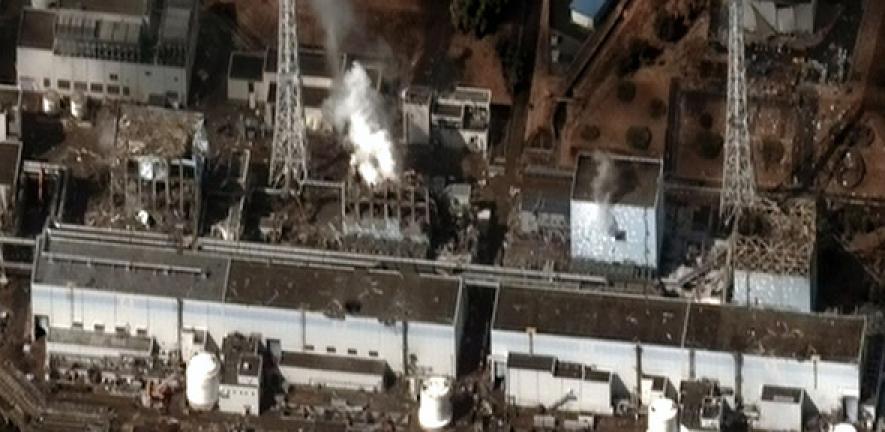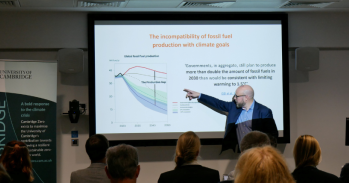
Makoto Takahashi (Department of Geography) discusses the impact of the Fukushima disaster and Japan's nuclear-liability laws.
Makoto Takahashi (Department of Geography) discusses the impact of the Fukushima disaster and Japan's nuclear-liability laws.
As four reactors at the Fukushima Daiichi Nuclear Power plant suffered catastrophic cooling failures and exploded in March 2011, the world watched in disbelief. For Japan, this was not just the greatest nuclear disaster since Chernobyl. It was “the most severe crisis … since World War II.”
Five years on, the nation continues to struggle with the effects. Towns up to 40km from the plant remain a dead-zone: desolate and uninhabited. As many as 100,000 people still remain displaced, unable to return to their homes. Workers at the Tokyo Electric Power Company (TEPCO)still don claustrophobic masks and rubber suits to venture into the Fukushima facility. Their job is to decommission the plant safely, a task that plant manager Akira Ono recently said was “about 10% complete”.
The task is beset with setbacks and spiralling costs. In December 2011 the government estimated that managing Fukushima would cost US$50 billion. By 2014 this had nearly doubled to include US$19 billion to decommission the Fukushima plant; US$22 billion to decontaminate the surrounding area; US$9 billion to build temporary storage facilities for nuclear waste; and US$43 billion to compensate the victims. Today even this looks hopelessly optimistic.
Compensation
Julius Weitzörfer, a fellow of Law at Cambridge University, reports that Fukushima is now the biggest civil liability case in history. More than two million people have sued TEPCO and US$50 billion has already been paid out. This is roughly equivalent to 49 Exxon Valdez oil spill settlements, and experts predict the total cost of compensation could rise to US$120 billion.
One notable subplot has been compensation for cases of suicide. A court’s landmark decision that TEPCO pay US$470,000 to the heirs of a 58-year-old farmer’s wife named Hamako Watanabe could prove much more costly. The Watanabe family were evacuated from the village of Yamakiya in April 2011, losing their farm and leaving them with a US$140,000 mortgage on their now uninhabitable home. Watanabe became severely depressed and during an authorised one-night visit to their home in June the same year, she burned herself to death.
Other bereaved families have also come forward. Two similar cases are now underway, and the Japanese government anticipates that as many as 56 suicides could be tied to the disaster. And this looks conservative: the NHK broadcasting service has put the number at 130. What is certain is that the number is rising. A further 19 evacuees took their lives in 2015 and there is no reason to believe 2016 will be any different.
Who pays
Officially the buck for everything stops with TEPCO. Under Japanese nuclear-liability law, the nuclear operator is responsible for the full cost of an accident, even if it is not proven to be negligent.
In practice, the Japanese taxpayer is bearing a significant share of the burden. Speakers at “Fukushima Five Years On” - an expert workshop recently hosted by Cambridge University - emphasised that whilst TEPCO’s liability is unlimited, its assets are not. Despite the country’s seismic history, TEPCO’s private insurance policy did not cover earthquakes or tsunamis. And in accordance with regulations introduced in 2009, TEPCO was insured –through both private policies and state indemnities- for up to just US$1.1 billion: about a fiftieth of the damages paid out so far.
The government has been forced to prevent TEPCO’s bankruptcy – over and above all of its other Fukushima-related outgoings. It has bought a majority share and has continued to finance compensation payments through a series of indemnity agreements and loans in the form of government compensation bonds. The state has also taken the extreme measure of enacting retroactive legal guidelines that obligate other power companies and financial institutions to contribute to the compensation effort.
One has to ask whether the concept of unlimited liability has any real meaning when the operator’s capacity to pay is so limited. It also raises questions for other parts of the world. In the UK, for example, nuclear liability is capped at a mere US$220m, less than two hundredths of what TEPCO has already paid in compensation claims. Japan is evidently not the only country that should be taking lessons from Fukushima.
The article originally said that the TEPCO payouts to date are 400 times that of Exxon Valdez, as opposed to 49. It also said that the dead zone around the plant was 10km, but now says 40km.
Makoto Takahashi, Pre-doctoral researcher, University of Cambridge
This article was originally published on The Conversation. Read the original article.
The opinions expressed in this article are those of the individual author(s) and do not represent the views of the University of Cambridge.

The text in this work is licensed under a Creative Commons Attribution 4.0 International License. For image use please see separate credits above.




